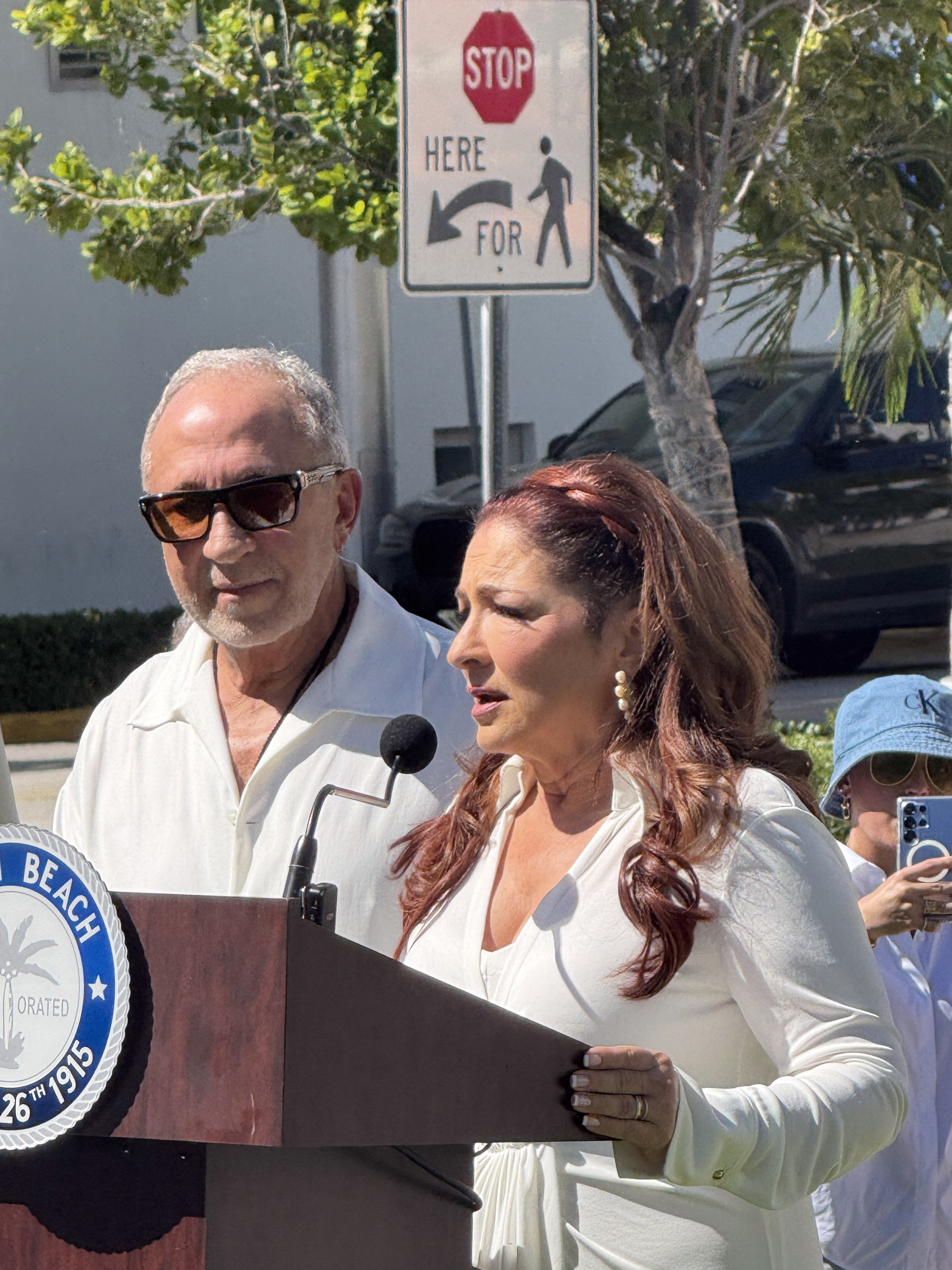Gloria Estefan Way and the Soundtrack of a City
In a city where neon meets nostalgia and rhythms echo off pastel walls, a small but significant corner of Ocean Drive just earned a new name: Gloria Estefan Way. And for those of us who call Miami Beach home, this wasn’t just a civic gesture—it was a quiet, thunderous recognition of how one woman’s rhythm helped shape the soul of this city.
The Street Where It All Loops Back
It was a humid October morning, the kind where the ocean breeze and diesel tour buses wrestle for dominance. I stood near the Cardozo Hotel—Gloria and Emilio Estefan’s 1930s Art Deco jewel—watching a modest ribbon-cutting ceremony that felt more like a block party infused with memory. Gloria stood radiant in white, ribbon in hand, flanked by her husband Emilio and their children, Emily and Nayib, whose quiet smiles carried a legacy’s weight.
Commissioner Laura Dominguez took the mic and said what many of us were thinking: “Gloria Estefan has long called Miami Beach home. Over the years, she and her husband have contributed so much to our city’s cultural and culinary scene.” That was no exaggeration. Between their music, their revival of the Cardozo, and their restaurant Bongos (now gone, but never forgotten), the Estefans have built more than a brand—they’ve helped shape Miami’s global image.
More Than a Sign, a Statement
The new bilingual street sign—standing proud at the intersection of 13th and Ocean—isn’t just symbolic. It’s reflective. Reflective of a city in transition, of cultures colliding and coexisting, and of the kind of immigrant success story that often gets drowned out in the noise of modern politics and celebrity fatigue.
Gloria said it best when she took the podium and, with that unmistakable voice—a velvet thunder—declared: “What a way to close out our 50th year in the music industry, and with the number 13—that’s our family’s lucky number—next to our hotel.”
“You come from nothing, you build something, and if you’re lucky, it echoes back to you.” — Gloria Estefan
Echoes in the Concrete
That word stuck with me: echoes. Because Gloria’s music didn’t just top charts—it stuck. It played in the corner bodegas of Little Havana, in South Beach clubs before EDM took over, and in kitchens like my own, where my abuela would shuffle to “Conga” while cooking arroz con pollo.
In a city that constantly reinvents itself—sometimes beautifully, sometimes ruthlessly—Gloria’s permanence is a rare gift. And that permanence was hard-won: a traumatic 1985 bus crash, the cultural uphill battle of bringing Latin rhythms to American radio, and the quiet decades of community work that rarely make headlines.
For the Late Bloomers, a Love Letter
This street isn’t just about the Estefans. It’s for anyone who came here with nothing but a voice, a dream, a hustle. It’s for the artists performing on Lincoln Road corners, for the exiles navigating new languages, and for every family rebuilding after the storm—literal or otherwise.
It’s also a quiet challenge to cities like my former home, Los Angeles, where fame is plastered on sidewalks but history is often erased. Miami’s honoring of Gloria is less about glamor and more about gratitude. Not for perfection, but for persistence.
Closing Out on Rhythm
As I left the scene, the sky threatening rain but holding back in deference, I thought about how music is the one medium that doesn’t age—it just evolves. Gloria Estefan is living proof. Her journey from Havana to Little Havana to Ocean Drive isn’t just her story. It’s ours. And now, it’s engraved in concrete.
Gloria Estefan Way. May it echo for generations. And may every step along it remind us that sometimes, the longest journeys begin with a single conga beat.
%20(4).png)







.png)
